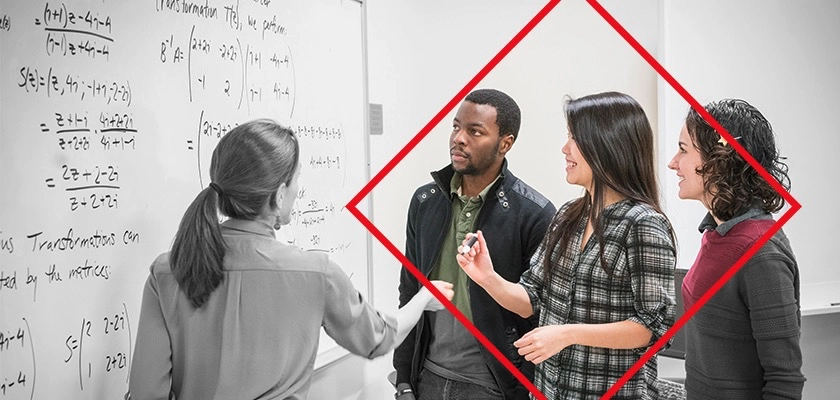10 Tips to Stop One-Way Communication
One-way communication can hinder learning and stop a discussion. Here are 10 tips from Professors George Manning and Kent Curtis on how to stop one-way communication.

One-way communication can hinder learning in many ways. If you’re always talking at your students, rather than talking with them, they can tune out, become frustrated, be afraid to ask questions or fail to become independent thinkers. So what are some ways to avoid one-way only communication?
- Stop and let the other person speak. You cannot listen to others if you are interrupting someone or overpowering a conversation. Give the other person a chance to speak or respond.
- Put the talker at ease. Help the other person feel free to talk. Provide a supportive environment or atmosphere. Sit or stand in a relaxed manner.
- Show the person that you want to listen. Look and act interested. Don't read your e- mails or text messages while the other person is talking. Maintain eye contact.
- Remove distractions. Don't doodle on, tap, or shuffle papers. Shut down the computer. Hold telephone calls. Will it be quieter if you close the door?
- Empathize with the person. Try to put yourself in the other person's place to understand the speaker's point of view.
- Be patient. Allow time. Don't interrupt. Don't walk toward the door or walk away while the other person is talking. Some people take longer than others to make a point.
- Hold your temper. An emotional person may misinterpret a message or may say something unintended. If you are angry, cool off before responding. Take a walk, or try counting to 10.
- Go easy on argument and criticism. Being judgmental puts the speaker on the defensive and may result in a blowup, or it may cause the person to shut down. Listen to understand, rather than to make judgments.
- Ask questions. This response encourages the speaker and shows you are listening. It also helps develop additional points. Few actions demonstrate respect as much as asking others for their opinion.
- Encourage clarification. When the speaker touches on a point you want to know more about, simply repeat the statement as a question. This technique will allow clarification and elaboration.
Keep these tips in mind the next time you’re having a conversation, and you’ll be sure to have productive, respectful discussions in any setting you’re in!
References
H. Mintzberg, Power in and around Organizations (Englewood Cliffs, NJ: Prentice-Hall, 1983).
G. Reedy, The Twilight of the Presidency (New York: World, 1970), pp. 11-15, 76-83.
B. LaMonte, Winning the NFL Way (New York: Harper Collins, 2004).
A. Mehrabian, Nonverbal Communication (New York: Aldine Transactions, 2007); and J. Newstrom, Organizational Behavior, 14th ed. (New York: McGraw-Hill/Irwin, 2014).
T. Morris, If Aristotle Ran General Motors (New York: Henry Holt & Company, 1997
K. Nair, A Higher Standard of Leadership (San Francisco: Berrett-Koehler, 1997)
L. Wiseman, Multipliers (New York: HarperCollins, 2010).


